Robert Steuckers:
En souvenir d’Olier Mordrel
Olier Mordrel fut certes un homme de chair et de sang mais il fut aussi la quintessence, ou une facette incontournable de la quintessence de l’idée bretonne; et, au-delà de cette idée bretonne, il incarnait, en sa personne, la révolte d’un réel et d’un vécu brimés, brimés au nom de dogmes politiques abstraits qui oblitèrent, altèrent et éradiquent les legs populaires pour mieux asseoir une domination sans racines ni humus, portée par des gendarmes, des avocassiers bavards ou des fonctionnaires sans coeur ni tripes. Nul ne pourra contester cette affirmation de la quintessence bretonne incarnée en la personne d’Olier Mordrel, dont je vais esquisser ici un portrait.
Disparition des voix énergiques et des regards de feu
Cette affirmation, je la fais mienne aujourd’hui, en rendant cet hommage, sans doute trop concis, à ce chef breton, à ce croyant et ce fidèle, dont la foi et la loyauté se percevaient dans un timbre de voix, propre aux hommes vrais des années 20, 30 et 40. Ce type de voix a disparu dans tous les pays d’Europe: c’est, pour moi, un indice patent du déclin que subit notre Europe. Tout comme s’en vont, un à un, ces gaillards au regard de feu dont une formidable dame italienne déplorait la disparition, lors d’un repas convivial à Gropello di Gavirate en août 2006; cette dame, qui irradie la force et la joie, est la belle-mère de notre ami italien Rainaldo Graziani, fils de l’ami d’Evola, Clemente Graziani. Ce dernier, qui avait combattu jusqu’au bout dans les rangs des unités de la “République Sociale”, à peine libéré de son camp de prisonniers de guerre, avait chanté des chants patriotiques dans les rues de Rome; il avait, pour cela, été jeté quinze jours en prison à la “Regina Coeli”, y avait découvert un livre d’Evola et avait immédiatement voulu voir le Maître, pour mettre toutes ses actions futures au diapason de celui qui semblait lui indiquer la seule Voie praticable après la défaite. Pour cette dame, qui, assurément, possède encore ce feu intérieur, les hommes d’hier ont fait place à des mollassons, même parmi ceux qui osent se revendiquer du “bel héritage”. Jean Mabire aussi possédait ce feu intérieur. Son regard me l’a fait entrevoir quand il m’a serré la pince pour la dernière fois, à Bruxelles en décembre 2005, lorsque nous sortions du restaurant où nous avions assisté à une causerie/projection des “Amis de Jean Raspail”. Nous avons, en ce début de 21ème siècle, le triste devoir d’assister à la disparition définitive d’une génération pré-festiviste, qui avait véritablement fait le sel de notre Vieille Europe. Pour moi, Mordrel fut l’un des premiers à disparaître, quinze ans avant l’an 2000. C’est donc avec émotion que je couche ces lignes sur le papier. Sa voix, le regard de feu de Jean Mabire, la voix et les yeux de bien d’autres, comme cette sacrée Julia Widy de Deux-Acren, qui me parla avec force et chaleur de ses engagements passés quand je n’avais que quatorze ans, sont bien davantage que de simples phénomènes optiques et auditifs: ce sont de véritables forces nouménales qui m’interpellent chaque jour que les dieux font et m’incitent ainsi à ne pas capituler et à poursuivre, pour moi-même, pour mes amis et pour ceux qui veulent bien me lire ou m’écouter, la même quête spirituelle que les aînés et réamorcer sans cesse le combat pour une anthropologie axée sur cette valeur cardinale de l’humanité européenne qu’est la dignité, la Würdigkeit.
Du “Club des Cinq” à Markale
Dès l’école primaire, j’ai été fasciné par les matières de Bretagne, alors qu’adulte, je n’ai jamais eu l’occasion de mettre les pieds dans cette région d’Europe. Dans les versions françaises de la collection enfantine “Le Club des Cinq”, les aventures, toutes fictives, du quatuor, flanqué du chien Dagobert, se déroulent en Bretagne. Le paysage évoque une côte qui n’est pas plane, rectiligne, de dunes et de sable comme la nôtre, en Flandre. Elle est faite d’îles, d’îlots, de récifs, avec, derrière elle, non les Polders que nous sillonnions à vélo derrière Coq-sur-Mer, mais des landes de bruyère, avec des maisons mystérieuses, pleines de souterrains et de passages secrets. Dans mon enfance et ma pré-adolescence, je voulais voir un littoral échancré, que je ne verrai qu’en Grèce en 1972-73 et en Istrie en 2009 et en 2011. Et je ne verrai le littoral de la Bretagne qu’en images, que dans un cadeau d’Olier Mordrel, un beau livre de photos, tout simplement intitulé “La Bretagne”.
Ensuite, un condisciple de l’école primaire, Luc Gillet, avait un père ardennais et une mère bretonne: ses allégeances oscillaient entre un patriotisme français (ancien régime) et un “matrionisme” breton. Finalement, à l’âge adulte, quand il a commencé à étudier le droit aux Facultés Universitaires Saint-Louis, c’est l’option bretonne qui a pris le dessus: après avoir potassé son code civil ou son droit constitutionnel, il suivait des cours de biniou. Je l’ai perdu de vue et le regrette. Le mythe chouan était gravé dans ma petite cervelle grâce, comme j’ai déjà eu l’occasion de l’écrire, à un cadeau de communion solennelle, “Le Loup blanc” de Paul Féval, auteur auquel Jean Mabire n’a pas manqué de rendre hommage. Plus tard, la Bretagne ne disparaît pas: notre professeur de latin, l’Abbé Simon Hauwaert avait été un fidèle étudiant de l’irremplaçable Albert Carnoy, professeur à Louvain avant la première guerre mondiale et, après un intermède américain entre 1914 et 1919, pendant l’entre-deux-guerres. Hauwaert, nous exhortait à explorer les racines indo-européennes de notre inconscient collectif, exactement comme Carnoy l’avait fait en publiant, en 1922, un ouvrage concis et fort bien charpenté sur les dieux indo-européens. Outre sa volonté de nous faire connaître à fond les legs gréco-romains et les pièges de la grammaire latine, il insistait sur la nécessité d’aborder en parallèle les mythologies germaniques (en particulier les “Nibelungen”) et celtiques (les “Mabinogion”). En obéissant à cette injonction, j’ai commencé, dès l’âge de seize ans, à lire les ouvrages de Markale sur les mythologies bretonne et irlandaise ainsi que les articles, encore épars, de Guyonvarc’h, récemment décédé.
Les études universitaires mettront un terme provisoire à cet intérêt celtisant: l’apprentissage des grammaires allemande et anglaise, les techniques de traduction, les nombreuses heures de cours etc. ne permettaient pas de poursuivre cette quête, d’autant plus qu’il fallait, en marge des auditoriums académiques, rester “métapolitiquement actif”, en potassant Pareto, Monnerot, Mannheim, Sorel, Schmitt, Evola et Jünger, dans le sillage du GRECE, de nos cercles privés (à connotations nationales-révolutionnaires) et des initiatives de Marc. Eemans, le surréaliste non-conformiste avec qui Jean Mabire a entretenu une correspondance.
Olier Mordrel téléphone au bureau de “Nouvelle école”
En 1978, lors du colloque annuel du GRECE, Jean-Claude Cariou, que je ne connaissais pas encore personnellement, m’indique, assez fier, qu’Olier Mordrel est présent parmi les congressistes et me montre où il se trouve au milieu d’un attroupement de curieux et d’enthousiastes qui voulaient absolument le voir, lui serrer la main, l’encourager, parce qu’ils ne l’avaient jamais vu, depuis son retour, d’abord discret, de ses exils argentin et espagnol. C’est ainsi que la puce nous a été mise à l’oreille: Mordrel était l’auteur du livre “Breizh Atao” (1973), une histoire du mouvement breton le plus radical du 20ème siècle, toute pétrie de souvenirs intenses et dûment vécus, alors que nous, les plus jeunes, ne connaissions la matière de Bretagne que par les travaux de Markale, certes, et plutôt par les chants et les théories “folcistes” sur la musique populaire d’Alan Stivell (auquel j’avais consacré un des mes premiers articles pour “Renaissance Européenne” de Georges Hupin et pour la belle revue “Artus”, à l’époque éditée à Nantes par Jean-Louis Pressensé). C’était effectivement “Artus”, à l’époque, qui nous ré-initiait à la culture bretonne. Quelques années passent, je me retrouve, à partir du 15 mars 1981, dans les locaux du GRECE à Paris pour exercer la fonction de secrétaire de rédaction de “Nouvelle école”. Outre la mission de préparer des conférences pour le GRECE, à Paris, au Cercle Héraclite, à Grenoble, à Strasbourg voire ailleurs, ma tâche a été, en cette année 1981, de réaliser deux numéros de la revue: l’un sur Vilfredo Pareto (avec l’aide du regretté Piet Tommissen), l’autre sur Heidegger (il sera parachevé par mon successeur Patrick Rizzi). Un beau jour, le téléphone sonne. Au bout du fil, la voix d’Olier Mordrel. Il m’explique qu’il vient de terminer la rédaction du “Mythe de l’Hexagone”. Il souhaite me confier le manuscrit pour que je lui donne mon avis. Je suis abasourdi, horriblement gêné aussi. Me confier son manuscrit, à moi, un gamin qui venait tout juste de sortir des écoles? Lui, le vieux combattant, désormais octogénaire? Inouï! Incroyable! Il insiste et quelques jours plus tard, je reçois un colis contenant une copie du tapuscrit. Je l’ai lu. Mais jamais je n’aurais osé formuler la moindre critique sur cet ouvrage copieux, fruit d’une réflexion sur l’histoire de France qui avait mûri pendant de longues décennies, dans le combat, l’adversité, l’amertume, l’ostracisme, l’exil, fruit aussi des longues conversations avec l’attachant Roger Hervé (à qui Mordrel dédiait cet ouvrage). Devant une telle somme, les gamins doivent se taire, fermer leur clapet car ils n’ont pas souffert, ils n’ont pas risqué leur peau, ils n’ont pas mangé le pain amer de l’exil. Quand Olier Mordrel m’a demandé ce que je pensais de son livre à paraître, une bonne semaine plus tard, je lui ai dit que, de toutes les façons, son ouvrage était aussi un témoignage, une vision personnelle en laquelle personne ne pouvait indûment s’immiscer sans en altérer la véracité vécue. Il a été satisfait de ma réponse.
Mordrel dans la tradition de Herder
J’ai ensuite lu “Breizh Atao” et, plus tard, “L’Idée bretonne” pour parfaire mes connaissances sur le combat breton. La parution du “Mythe de l’Hexagone” a été suivie d’une soirée de dédicaces dans un centre breton au pied de la Tour Montparnasse. Elle m’a permis de faire connaissance avec l’équipe de “Ker Vreizh”, animée à l’époque par Simon-Pierre Delorme, dont l’épouse, hélas décédée, était une brillante germaniste. Et aussi d’Ingrid Mabire, présente lors de l’événement. Cette confrontation avec la quintessence de l’idée bretonne, par l’entremise de Delorme, de Mordrel et surtout, ne l’oublions pas car il ne mérite assurément pas d’être oublié, de Goulven Pennaod, était, pour moi, concomitante d’une lecture de Herder, via la thèse magnifique d’un Professeur d’Oxford, F. M. Barnard (1), et des éditions bilingues proposées à l’époque par Aubier-Montaigne et préfacées tout aussi magistralement par Max Rouché (2). Pour “Nouvelle école”, je voulais rédiger un long article sur Herder et sur le droit qui découle de sa philosophie (via Savigny et Uwe Wesel). Pierre Bérard a partiellement réalisé mes voeux en publiant une longue étude dans la revue-phare du GRECE, une étude elle aussi magistrale, comme tout ce qui vient de ce professeur angevin exilé en Alsace, sur Louis Dumont, disciple français et contemporain de Herder. Un article plus directement consacré à Herder ou un numéro plus complet sur sa pensée (et sur sa postérité prolixe) aurait permis de consolider le lien entre le corpus de la “nouvelle droite”, qui n’est pas nécessairement tourné vers les patries charnelles, et le corpus de tous ceux qui entendent mettre un terme aux abus et aux travers du jacobinisme ou aux déviances dues à la volonté de fabriquer “une cité géométrique” par “dallage départemental” (selon la terminologie utilisée par Robert Lafont, militant occitan). Car Mordrel, volens nolens, est un disciple de Herder, surtout si l’on tient compte de l’aventure éditoriale qu’il a menée avant-guerre en publiant la revue “Stur”.
La métapolitique de “Stur”
Dans “L’Idée bretonne”, Mordrel résume bien l’esprit qui animait la revue “Stur”, dont le premier numéro sort en juillet 1934. “Stur” se posait comme une “revue d’études indépendante” mais elle ne cherchait pas à se soustraire au combat politique, devenu violent en Bretagne après les échecs électoraux du mouvement “Breizh Atao” dans les années 20. Pour Mordrel, l’idée bretonne devait offrir des solutions aux problèmes réels et concrets de la Bretagne, sinon “elle serait rejetée par le peuple comme un colifichet sans intérêt”. Le but de “Stur” n’était pas de faire de l’intellectualisme: au contraire, la revue préconisait de se méfier des “intellectuels purs”, “étrangers au monde des métiers, dégagés des liens multiples et vivants qui nous rendent solidaires du corps social”. “Nous avions horreur”, poursuit Mordrel dans son évocation de l’aventure de “Stur”, “de cette engeance qui triomphe sans modestie à Paris” car elle a été “élevée dans le royaume des mots, vivant de sa plume ou de sa langue, qui choisit entre les idées et non entre les responsabilités”. Pour “Stur”, les idées ne sont donc pas des phénomènes intellectuels mais des instruments pour “modeler la personne intime de l’homme”. Bref: ne pas vouloir devenir de “beaux esprits” mais des “drapeaux”; n’avoir que “des pensées nouées à l’acte”.

Les articles de “Stur” ne seront donc pas doctrinaux, car l’énoncé sempiternel d’une doctrine finit par lasser, mais ils ne seront pas pour autant exempts de références à des auteurs ou à des filons philosophiques, lisibles en filigrane. Pour Olier Mordrel, l’apport intellectuel majeur à “Stur” vient essentiellement d’Oswald Spengler, via les articles du regretté Roger Hervé (signant à l’époque “Glémarec”) (3). Hervé/Glémarec retient de l’oeuvre de Spengler plusieurs éléments importants, et les replace dans un combat précis, celui de la Bretagne bretonnante, comme ils pourraient tout aussi bien être replacés dans d’autres combats: 1) pour Hervé, Spengler ne dérive pas sa démonstration d’une idée simple, fixe et pré-établie (comme “l’homme bon” de Rousseau ou la “lutte des classes” de Marx), d’une sorte d’All-Gemeinheit comme auraient dit Ernst Jünger et Armin Mohler, mais la tire des lois de l’évolution historique où l’homme n’est ni bon ni méchant a priori mais “fait le nécessaire ou ne le fait pas”; 2) Spengler, pour Hervé, est un professeur d’énergie dans la mesure où seuls comptent pour lui, sur les scènes de l’histoire, les hommes au caractère trempé, capables de prendre les bonnes décisions aux bons moments. Bref ce que Jean Mabire appellera des “éveilleurs de peuple”...
La Bretagne libre dans une grande Europe
“Stur” abordera toutes les questions qui découlent de cette vision récurrente d’une “Bretagne excentrée” par rapport aux axes Paris/Le Havre et Paris/Bordeaux. Certes, reconnait “Stur”, la Bretagne se situe en dehors des grandes routes commerciales de l’Hexagone et est, de la sorte, territorialement marginalisée. C’est pourquoi elle doit se choisir un autre destin: retourner à la mer en toute autonomie, retrouver la communauté des peuples de la Manche, de la Mer du Nord et du Golfe de Biscaye donc se donner un destin plus vaste, “européen”, comme celui qu’elle a raté lorsque sa duchesse n’a pas pu épouser Maximilien de Habsbourg à la fin du 15ème siècle. “Stur” reconnaît cependant qu’un indépendantisme isolé ne pourra pas fonctionner (cf. “L’Idée bretonne”, pp. 150-151): la masse territoriale “hexagonale” sera toujours là, aux confins orientaux de l’Armorique, quels qu’en soient ses maîtres (ils auraient pu être anglais si les rois d’Albion avaient vaincu pendant la Guerre de Cent Ans; ils auraient pu devenir allemands à partir de 1940). Pour s’affirmer dans la concrétude géographique du continent et des mers adjacentes, le nouveau nationalisme breton doit affirmer une vision nouvelle: ce ne sera plus celle d’un indépendantisme étroit, comme aux temps héroïques de “Breizh Atao”, qui ne définissait son combat politique que par rapport à l’Etat français et non pas par rapport à l’espace civilisationnel européen tout entier (“Aucun petit Etat ne peut plus être sûr de son lendemain, s’il ne s’est pas volontairement inclus dans un système d’échanges commerciaux et de protection mutuelle”, op. cit., p. 150). Le nouveau nationalisme breton est un aspect, géographiquement déterminé, du nationalisme européen, dont les composantes sont des “ethnies réelles” et non plus des “Etats pluri-ethniques” ou “mono-ethniques” qui briment leurs minorités ou des entités administratives qui éradiquent les longues mémoires. Le peuple breton, dans cette optique, a toute sa place car il est une “véritable ethnie”, dans le sens où il est un “peuple-famille”, tous les Bretons étant plus ou moins “cousins”. Ce vaste “cousinage” —cette homogénéité ethnique— est le résultat d’un amalgame de longue durée entre Pré-Celtes armoricains, Celtes et Gallois, et non pas la revendication d’un type ethnique particulier (nordique ou alpin ou autre), que l’on perçoit comme édulcoré ou “mêlé” dans le monde actuel et qu’un eugénisme étatique se chargerait de reconstituer de la manière la plus pure possible.
“Stur” a également abordé la question religieuse, au départ de trois constats: 1) le christianisme a mis longtemps à oblitérer les traditions préchrétiennes, païennes, en Bretagne comme en beaucoup de régions d’Europe; 2) l’Irlande a développé un christianisme particulier avant l’ère carolingienne, l’a exporté par l’intermédiaire de ses missionnaires comme Colomban à Luxeuil-les-Bains et Fergill (Vergilius) à Bregenz dans le Vorarlberg; il s’agira de mettre les linéaments de ce “celto-christianisme” en exergue (“das iro-schottische Christentum”); 3) la religiosité rurale de Bretagne n’a été effacée que fort tardivement, par les missions jésuites des 17ème et 18ème siècles, qui, pour paraphraser l’anthropologue contemporain Robert Muchembled, ont imposé la “culture des élites” (schématique et abstraite) de la Contre Réforme à une “culture populaire” (vivante et concrète).
Gwilherm Berthou et la Tradition
La plupart des militants bretons étaient catholiques, se percevaient en fait comme de nouveaux chouans contre-révolutionnaires, ennemis des “Bleus”, reprenant un combat interrompu par l’exécution de Cadoudal en 1801, par la répression républicaine et bonapartiste, par le désintérêt de la Restauration pour la question bretonne (une Restauration qui trahissait ainsi a posteriori les chouans). Olier Mordrel rappelle simplement que le premier auteur nationaliste breton à avoir esquissé une critique du christianisme, comme idéologie religieuse oblitérant la spiritualité naturelle du peuple, a été Gwilherm Berthou (alias “Kerverziou”). Berthou préconisera, dans les colonnes de “Stur” d’étudier la mythologie comparée (Rome, monde germanique, monde celtique, Inde védique, etc.), comme l’avait fait de manière simple et didactique Albert Carnoy à Louvain au début des années 20, et comme le fera, plus tard, de manière tout-à-fait systématique, Georges Dumézil. Berthou ouvre de vastes perspectives, vu la pluralité de ses angles d’attaque dans ses recherches religieuses et mythologiques; rappelons aussi, car il fut là un précurseur, qu’il cherchait surtout à dégager les études religieuses, traditionnelles au sens guénonien du terme, de toutes les “cangues kabbalistiques ou martinistes”, du théosophisme et du spiritisme. Sa démarche était rigoureuse: Berthou est allé plus loin qu’un autre chantre du celtisme, le grand poète irlandais William Butler Yeats, auteur de “Visions”, où le celtisme qu’il chante et évoque n’est pas séparable des pratiques spiritistes dont il se délectait. Yeats demeurait dans les spéculations kabbalistiques et “les traditions légendaires de sa race, il les voyait comme un simple panneau décoratif et un sujet de rêverie” (op. cit., p. 154). La Bretagne, profondément religieuse, a fait (sur)vivre certains avatars de la grande “Tradition” dans les liturgies et les croyances de son peuple, pensait Berthou, mais cette ferveur populaire a été brisée par la modernité, comme partout ailleurs, faisant sombrer l’Occident dans un chaos, dont seule une révolution politico-métaphysique de grande ampleur pourra nous sauver. Berthou finira par ne plus guère énoncer ses théories traditionalistes-révolutionnaires dans les colonnes de “Stur”, où il avait dévoilé pour la première fois au public les linéaments de sa quête spirituelle. “Stur”, revue de combat politique et métapolitique tout à la fois, n’était pas le lieu pour approfondir des théories religieuses et métaphysiques. Berthou, sans rompre avec “Stur”, fonde la revue “Ogam”, où s’exprime sans détours aucuns, et avec davantage de profondeur, son traditionalisme révolutionnaire. Dans les multiples expressions de la “Tradition”, Berthou, contrairement à d’autres, ne cherche pas des gourous qui enseignent la quiétude ou le retrait hors du monde effervescent de l’histoire (comme on pourra plus tard le dire de René Guénon), mais, au contraire, il cherche des maîtres qui enseignent énergie et virilité (comme plus tard, Julius Evola avec sa “voie royale du Kshatriya” ou, en Allemagne, un Wilhelm Hauer qui découvre en Inde l’ascèse guerrière du bouddhisme) (4). “Ogam”, à ses débuts (car la revue a eu une longue postérité, bien après 1945), alliait, écrit Mordrel (op. cit., p. 155), “nietzschéisme” et “traditionalisme”. C’est la naissance d’un néo-paganisme breton, ajoute toujours Mordrel, “en décalage de vingt ans sur le néo-paganisme germanique, mais en avance de quarante ans sur le néo-paganisme parisien” (op. cit., p. 155).
L’idée bretonne selon Mordrel n’était donc pas une simple idée “vernaculaire”, qui aurait eu la volonté de se replier sur elle-même, mais une vision nouvelle du politique, de l’histoire et de l’Europe.
“Le Mythe de l’Hexagone”
Revenons au livre, par lequel nous avions fait connaissance au printemps de l’année 1981, je veux dire “Le Mythe de l’Hexagone”. A la relecture de cet ouvrage aujourd’hui un peu plus que trentenaire, il m’apparaît assez peu lié; les chapitres se succèdent à une cadence que l’on pourrait qualifier de fébrile; on peut repérer des idées fécondes mais pas assez exploitées, que l’auteur, on le sent, aurait voulu développer jusqu’au bout de leur logique. C’est cette incomplétude (due aux impératifs typographiques) qui devait inquiéter Mordrel qui, anxieux, demandait à tous, y compris à des gamins comme moi, ce qu’ils pensaient de ce texte quelque peu “testamentaire”. Mais l’ouvrage est une somme qui éveille à quantité de problématiques autrement insoupçonnées ou perçues au travers d’autres grilles d’analyse. Son apparente incomplétude est une invite à creuser, toujours davantage, les filons indiqués par notre homme, à élargir les intuitions mordreliennes. Devenu octogénaire, notre Breton de choc a voulu tout dire de ce qui lui passait par la tête, coucher sur le papier l’ensemble de ses souvenirs, la teneur de ses courriers et conversations avec Hervé et les autres.
Olier Mordrel, juge d’instruction et procureur
Première interpellation du militant breton Mordrel: “Ne vous fiez jamais aux historiographies stato-nationales toute faites: elles sont des fabrications à usage propagandiste; elles projettent les réalités actuelles sur le passé, et parfois sur le passé le plus lointain”, fonctionnent à coups d’anachronismes. Deux fois condamné à mort par l’Etat français, Mordrel, sans doute en son subconscient le plus profond, voulait tuer symboliquement, avant d’être tué (on ne sait jamais...) ou avant de mourir de sa belle mort, l’instance qui lui avait promis le poteau mais n’avait pu le lui infliger, parce qu’il avait eu la chance, contrairement à d’autres, d’échapper à son implacable ennemie. “Le Mythe de l’Hexagone” est en quelque sorte un duel, entre Mordrel et la “Gueuse”. Celle-ci avait, par deux fois, voulu nier et supprimer la personne Mordrel, comme elle avait nié et supprimé la personne Roos en Alsace, parce que la personne Mordrel affirmait haut et fort, avec belle insolence, sa nature profonde, naturelle, physique et ethnique de Breton, et par la négation/suppression judiciaire de cette personne bretonne particulière, réelle et concrète, la “Gueuse” entamait un processus permanent de négation de toute forme ou expression de “bretonitude”. Inacceptable pour ceux qui s’étaient engagé corps et âme pour une Bretagne autonome. Mordrel, avec “Le Mythe de l’Hexagone”, va jouer le double rôle du juge d’instruction et du procureur: il va systématiquement nier l’éternité dans le temps et l’espace que se donne rétrospectivement la “Gueuse” avec la complicité d’historiographes mercenaires. Non, crie Mordrel, la France n’existait pas déjà du temps des mégalithes: elle n’est pas une unité géographique mais un point de rencontre et de dispersion; “elle comporte des façades qui n’ont ni la même orientation ni les mêmes connections extérieures”; ses frontières dites “naturelles” sont un “mythe”. Voilà le fond du débat Mordrel/France: la Bretagne est une réalité concrète (et non pas un résidu inutile, appelé à disparaître sous l’action du progressisme républicain); la France, elle, est un “mythe”, plutôt un “mensonge” et une “construction” qui nie les réalités préétablies par Dame Nature, qui devrait retrouver ses droits, pour le bien de tous: ainsi, le Rhin, pour Mordrel, n’est en aucune façon une “frontière” mais un creuset et un trait d’union (entre Alsaciens et Badois), alors que la Loire, elle, sépare bien un Nord d’un Sud distincts avant le laminage généralisé par la machine à “géométriser” la Cité.
Le chapitre sur le Rhin mérite amplement d’être relu et, surtout, étoffé par d’autres savoirs sur ce fleuve et cette vallée d’Europe. Les géopolitologues connaissent, ou devraient connaître, le maître-ouvrage d’Hermann Stegemann sur l’histoire du Rhin, rédigé en Allemagne au lendemain du Traité de Versailles, en 1922. En Belgique, le chantre du parti annexionniste de 1919, Pierre Nothomb, grand-père de l’écrivain Amélie Nothomb, qui voulait mordre sur le territoire rhénan au lendemain de la défaite du Reich de Guillaume II, terminera sa carrière littéraire en chantant tendrement le creuset ardennais/rhénan/luxembourgeois sans plus aucun relent de germanophobie. De même, le mentor d’Hergé, le fameux Abbé Norbert Wallez, rêvera plutôt d’une symbiose catholique-mystique rhénane/wallonne, après avoir abandonné ses réflexes d’Action Française. Mais ce sont là d’autres histoires, d’autres itinéraires politico-intellectuels, qui auraient bien passionné Olier Mordrel et Jean Mabire.
Hypothèses originales
Mordrel truffe ensuite “Le Mythe de l’Hexagone” de toutes sortes d’hypothèses originales. Quelques exemples : 1) le noyau de la France actuelle est la “Neustrie” précarolingienne, en voie de “dé-francisation”, c’est-à-dire de “dé-germanisation” (le francique fait totalement place au gallo-roman du bassin parisien) à côté d’une Austrasie mosane, mosellane et rhénane, celle des Pippinides, qui volera au secours de cette Neustrie aux chefs indécis et de l’Aquitaine ravagée au moment du raid maure contre Poitiers (732); 2) il n’y a pas eu d’ébauche de la France avant le 12ème siècle, affirme Mordrel, et d’autres Etats ou royaumes possibles auraient pu émerger sur ce qui est aujourd’hui le territoire de l’Hexagone: par exemple un empire postcarolingien de la Seine à l’Elbe; un double royaume, britannico-francilien autour de Paris et gaulois méridional autour de Bourges (centre géographique de l’actuel Hexagone); une fusion des héritages bourguignon et lorrain, constituant un espace médian entre une Post-Neustrie séquanaise et un bloc impérial germanique s’étendant jusqu’aux confins slaves de la Vistule au Nord ou de la Drave au Sud (Carinthie/Slovénie); l’émergence d’un “Royaume du Soleil” catalan et provençal, de Valence en Espagne à Menton sur l’actuelle frontière italienne, appelé à maîtriser tout le bassin occidental de la Méditerranée, îles comprises, contre les incursions sarrasines (l’Aragon se donnera cette tâche, une fois uni à la Castille); 3) l’historiographie française est encadrée par l’Etat et cherche en permanence à faire disparaître les preuves des impostures ou les traces de crimes abominables (génocides vendéen et franc-comtois); l’honnêteté intellectuelle veut qu’on les dénonce et qu’on leur oppose d’autres visions. Etc.
On pourra dire que Mordrel est parfois très injuste à l’endroit de la France mais, ne l’oublions pas, il est une sorte de procureur fictif qui réclame sa tête, comme celui, bien réel, de la “Gueuse” avait réclamé la sienne. Normal: c’est en quelque sorte un retour de manivelle... En attendant, les historiens contemporains, plus sensibles aux histoires régionales que leurs prédécesseurs, redécouvrent la matière de Bourgogne, l’originalité de l’histoire lorraine, comtoise ou savoisienne. Les idées de l’occitaniste Robert Lafont font leur chemin dans les têtes de ceux qui pensent le réaménagement post-centralisateur du territoire. Il est certain que, quant au fond, les idées ethnistes et fédéralistes de Mordrel, exprimées en leur temps sur le mode véhément que prennent toujours ceux que l’on refuse sottement d’écouter, ne soulèveraient plus le tollé chez les bonnes âmes ni le désir d’envoyer l’effronté à la mort comme chez ses juges du 7 mai 1940.
Epilogue
Yann Fouéré, disparu fin 2011, à l’âge vénérable de 102 ans, a rendu un vibrant hommage à Mordrel dans son livre “La Patrie interdite”, où il campe bien, et chaleureusement, le caractère et l’intransigeance de son compagnon d’armes pour l’autonomie ou la libération de la Bretagne. Cet hommage est d’autant plus admirable que les deux hommes n’avaient pas le même caractère ni, sans doute, les mêmes vues sur le plan pragmatique. Enfin, quand Pierre Rigoulot décide d’interroger les “enfants de l’épuration” pour en faire un livre épais (5), il s’en va questionner deux des trois fils d’Olier Mordrel, qui nous laissent des témoignages intéressants à consulter, pour cerner la personnalité de notre combattant breton: celui de l’aîné, Malo, né en 1928, est mitigé car, chacun le sait, il n’est pas aisé d’avoir un père militant et d’avoir été brinquebalé sur les routes de l’exil, de Sigmaringen au Sud-Tyrol et de l’Italie vaincue aux confins de la pampa de Patagonie; celui de Trystan, né en 1958 en Argentine, prétend s’inscrire dans la trajectoire de son père. Anecdote: ce Trystan, que j’ai perdu de vue depuis fort longtemps, avait voulu m’accompagner lors d’une longue marche entre Ypres et Dixmude, où nous nous arrêtions pour visiter les monuments de la Grande Guerre. Il me parlait de son grand-père, officier des fusiliers-marins bretons engagés à Dixmude en octobre 1914, aux côtés de l’armée belge exténuée par sa retraite et de quelques compagnies de Sénégalais. Et il voulait absolument voir le “Mémorial des Bretons”, au lieu-dit du “Carrefour de la Rose” à Boezinge (6). Pourquoi? D’après Trystan Mordrel, la disparition tragique, suite à une attaque allemande précédée d’une nappe d’ypérite en avril 1915, de beaucoup de soldats bretons des 45ème et 87ème divisions d’infanterie de réserve, aurait constitué le déclic qui fit de l’adolescent Olier Mordrel un combattant breton intransigeant; en effet, les soldats de ces deux divisions étaient des réservistes entre 35 et 45 ans, surnommés, par les jeunes poilus de première ligne, “les pépères”. Dans l’école et le village d’Olier, bon nombre de ses petits camarades de jeu étaient devenus orphelins après cette bataille d’avril 1915. Le sang breton avait été sacrifié, pensait Olier adolescent, en vain, en pure perte. Sentiment équivalent à celui de bon nombre de Flamands, qui créeront après 1918 le “Frontbeweging”. Le “Mémorial des Bretons” du “Carrefour de la Rose” n’a que de petites dimensions mais est terriblement poignant: un vrai dolmen en pierre de Plouagat et un calvaire comme en pays armoricain.
J’envoyais systématiquement mes productions à Mordrel qui les lisait attentivement. Dans l’article nécrologique, publié dans le numéro 21/22 de “Vouloir”, Serge Herremans rend hommage à Mordrel disparu: “Olier Mordrel nous a quittés. Avec lui, nous perdons surtout un aîné qui nous a indiqué la voie à suivre pour construire une Europe fédérale mais consciente de son unité géopolitique. Mais nous perdons aussi un lecteur attentif et enthousiaste qui n’a jamais cessé de nous prodiguer moults encouragements. Le plus touchant de ses encouragements fut celui-ci: ‘Vous avez le grand mérite de partir du Vécu’. Pour un combattant de la trempe d’un Mordrel, ce n’est pas un mince compliment. Nous tâcherons de rester à la hauteur de son estime”. Deux ou trois semaines avant de mourir, Olier Mordrel m’avait confié un article, sans doute le tout dernier qu’il ait écrit. Intitulé “Les trois niveaux de la culture” (7), il avait cette phrase pour conclusion: “Pour faire le tableau de la culture de demain, il faudrait la voyance d’un Spengler, la véhémence d’un Nietzsche, le lyrisme d’un Michelet. Qu’il nous suffise d’en préparer les voies”. La dernière phrase est une injonction: que les lecteurs de mes modestes souvenirs en tirent les justes conclusions...
Robert Steuckers.
Notes:
1) F. M. BARNARD, Herder’s Social and Political Thought – From Enlightenment to Nationalism, Clarendon Press, Oxford, 1965.
2) Max ROUCHE, “Introduction” à a) Herder, Idées pour la philosophie de l’histoire de l’humanité (Ideen zur Philosophie der Geschichte der Menschheit), Aubier/Montaigne, éd. bilingue, 1962; et b) Herder, Une autre philosphie de l’histoire (Auch eine Philosophie der Geschichte), Aubier/Montaigne, éd. bilingue, 1964.
3) Roger Hervé vivait, quand je l’ai connu, dans un petit appartement exigu, en lisière de la Gare Montparnasse à Paris. Il était quasiment aveugle. Il disposait d’une magnifique bibliothèque et d’archives impressionnantes apparemment toutes consacrées à l’oeuvre d’Oswald Spengler, qu’il ne voulait pas aliéner. Lors d’une de mes visites, quand la cécité l’avait considérablement diminué, il m’avait offert une chemise de carton léger magnifiquement décorée de dessins, en bleu sombre, de Xavier de Langlais qui contenait une de ses oeuvres: un atlas très précis de l’histoire de la Bretagne, car Roger Hervé était aussi un excellent cartographe. Je possède aussi une petite plaquette verte intitulée “Actualité de Spengler”. Mais que sont devenus tous ces trésors, accumulés dans son minuscule appartement, après son décès?
4) Robert STEUCKERS, “Wilhelm Hauer, philosophe de la rénovation religieuse”, sur http://robertsteuckers.blogspot.com/
5) Pierre RIGOULOT, Les enfants de l’épuration, Plon, Paris, 1993 (voir chapitre: “Malo, Tanguy, Trystan et l’auteur de leurs jours” (pp. 409-430).
6) Ceux qui souhaitent visiter ces lieux de mémoire de la Grande Guerre, achèteront, dans les librairies militaires anglaises d’Ypres, et liront avec profit le guide que le Major britannique Holts a confectionné avec l’aide de son épouse: Major and Mrs. Holts, Battlefield Guide – Ypres Salient, Leo Cooper/Pen & Sword Books, Barnsley/South Yorkshire (GB), 1997.
7) Olier MORDREL, “Les trois niveaux de la culture”, in Vouloir, n°21/22, sept.-oct. 1985, pp. 5-7.
Livres consultés:
- Yann FOUERE, La Patrie interdite – Histoire d’un Breton, France-Empire, 1987.
- Yann FOUERE, Histoire résumée du mouvement breton de 1800 à 2002, Celtics Chadenn, coll. Brittia, Londres, 2002.
- Olier MORDREL, Breizh Atao – Histoire et actualité du nationalisme breton, Alain Moreau, 1973.
- Olier MORDREL, Le Mythe de l’Hexagone, Jean Picollec, 1981.
- Olier MORDREL, L’idée bretonne, Albatros, 1981.
- Olier MORDREL, La Bretagne, Nathan, 1983.






 del.icio.us
del.icio.us
 Digg
Digg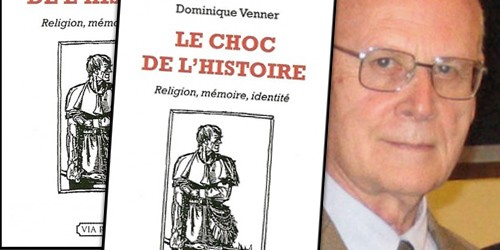
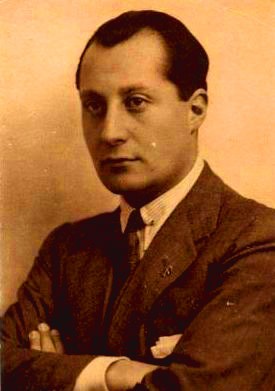 José Antonio Primo de Rivera y Saenz de Heredia Marques de Estella or José Antonio (as he is more commonly called) was born on April 24, 1903 in Madrid to grow up in a healthy aristocratic family environment as the eldest son of General Miguel Primo de Rivera, who was the Leader of Spain from 1923 to 1930. His family was socially prominent in Andalusia, having intermarried with large landholders and merchants around Jerez de la Frontera. From his father José Antonio inherited the title marqués de Estella.
José Antonio Primo de Rivera y Saenz de Heredia Marques de Estella or José Antonio (as he is more commonly called) was born on April 24, 1903 in Madrid to grow up in a healthy aristocratic family environment as the eldest son of General Miguel Primo de Rivera, who was the Leader of Spain from 1923 to 1930. His family was socially prominent in Andalusia, having intermarried with large landholders and merchants around Jerez de la Frontera. From his father José Antonio inherited the title marqués de Estella.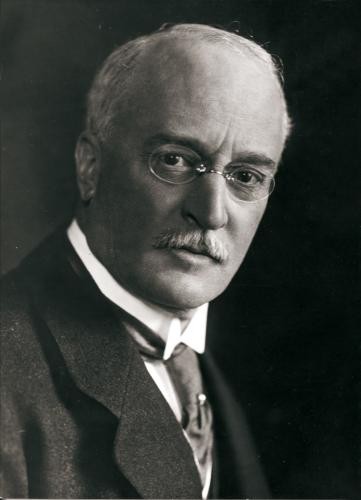 Es war ein ruhiger Abend auf See. Rudolf Diesel hatte im Speisesaal des luxuriösen Passagierdampfers “Dresden” mit einem bekannten Industriellen zu Abend gegessen. Der große, stattliche Mann mit Brille und Schnauzer war auf dem Weg nach London, wo er ein Motorenwerk einweihen sollte. In bester Laune hatte der 55-Jährige vom Deck aus noch die sternklare Nacht vom 29. auf den 30. September 1913 bewundert. Dann machte sich Rudolf Diesel, der Erfinder des Dieselmotors, auf den Weg in seine Kabine. Dies war der Augenblick, in dem er das letzte Mal gesehen wurde.
Es war ein ruhiger Abend auf See. Rudolf Diesel hatte im Speisesaal des luxuriösen Passagierdampfers “Dresden” mit einem bekannten Industriellen zu Abend gegessen. Der große, stattliche Mann mit Brille und Schnauzer war auf dem Weg nach London, wo er ein Motorenwerk einweihen sollte. In bester Laune hatte der 55-Jährige vom Deck aus noch die sternklare Nacht vom 29. auf den 30. September 1913 bewundert. Dann machte sich Rudolf Diesel, der Erfinder des Dieselmotors, auf den Weg in seine Kabine. Dies war der Augenblick, in dem er das letzte Mal gesehen wurde.


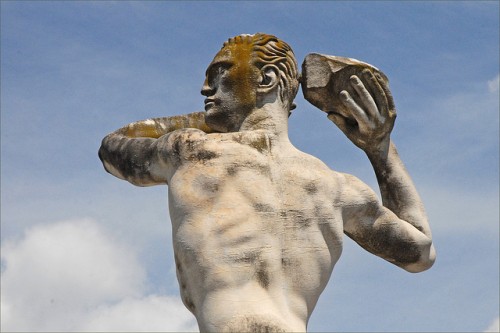


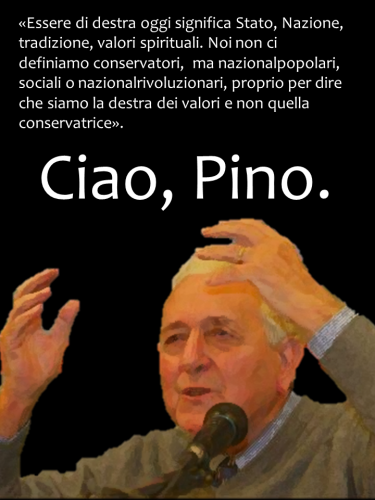


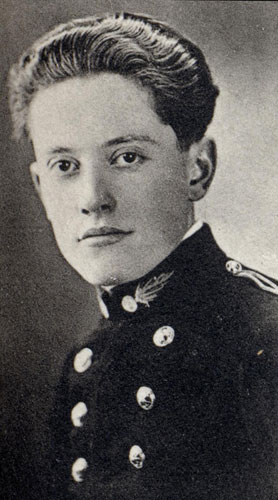 C’était le seul prix Nobel d’économie français. Né le 31 mai 1911, il part aux États-Unis dès sa sortie (major X31) de Polytechnique en 1933 pour étudier in situ la Grande Dépression qui a suivi la Crise de 1929. Ironie de l’histoire, il a ainsi pu réaliser une sorte de “jonction” entre les deux Crises majeures du siècle. Son analyse, percutante et dérangeante, n’a malheureusement pas été entendue faute de relais.
C’était le seul prix Nobel d’économie français. Né le 31 mai 1911, il part aux États-Unis dès sa sortie (major X31) de Polytechnique en 1933 pour étudier in situ la Grande Dépression qui a suivi la Crise de 1929. Ironie de l’histoire, il a ainsi pu réaliser une sorte de “jonction” entre les deux Crises majeures du siècle. Son analyse, percutante et dérangeante, n’a malheureusement pas été entendue faute de relais.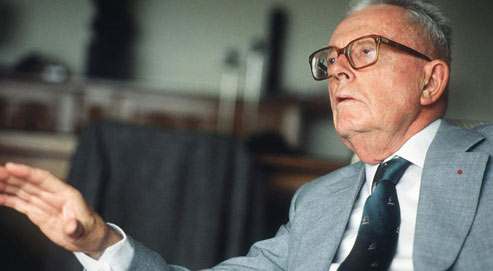
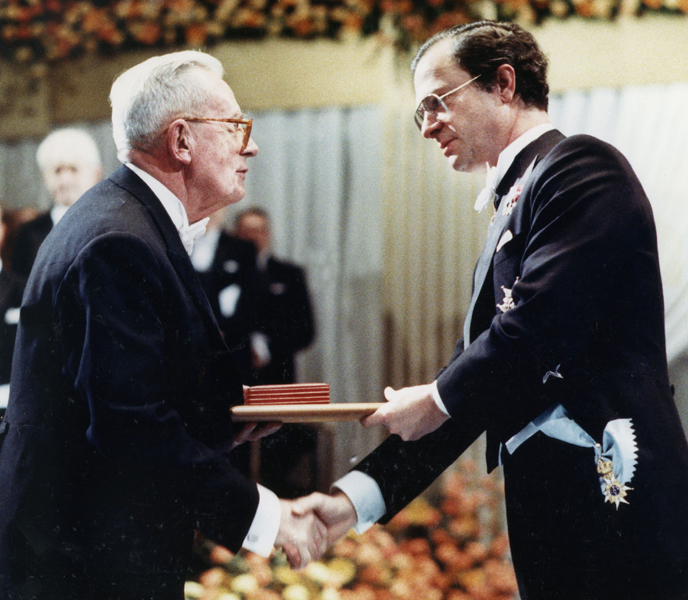
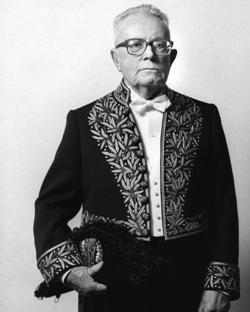
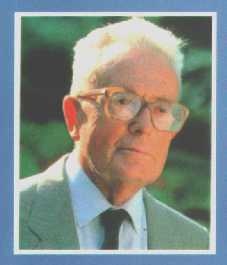 « Cette doctrine [la « chienlit mondialiste laissez-fairiste »] a été littéralement imposée aux gouvernements américains successifs, puis au monde entier, par les multinationales américaines, et à leur suite par les multinationales dans toutes les parties du monde, qui en fait détiennent partout en raison de leur considérable pouvoir financier et par personnes interposées la plus grande partie du pouvoir politique. La mondialisation, on ne saurait trop le souligner,
« Cette doctrine [la « chienlit mondialiste laissez-fairiste »] a été littéralement imposée aux gouvernements américains successifs, puis au monde entier, par les multinationales américaines, et à leur suite par les multinationales dans toutes les parties du monde, qui en fait détiennent partout en raison de leur considérable pouvoir financier et par personnes interposées la plus grande partie du pouvoir politique. La mondialisation, on ne saurait trop le souligner, 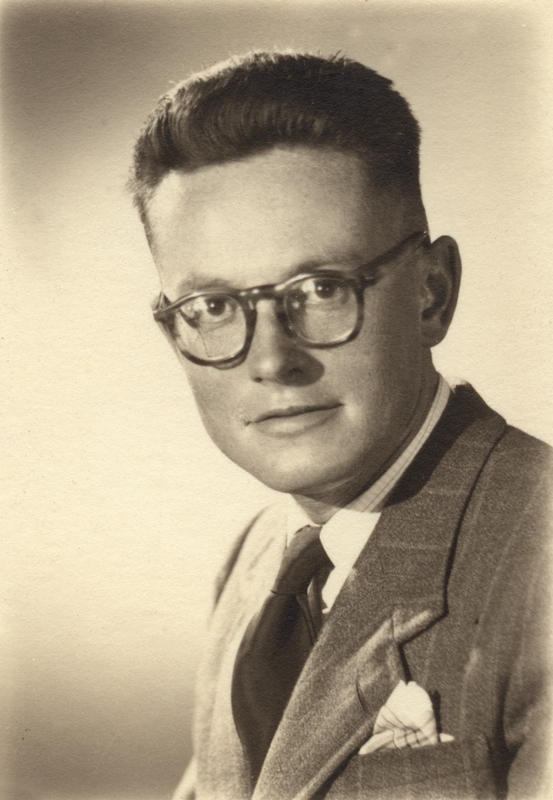
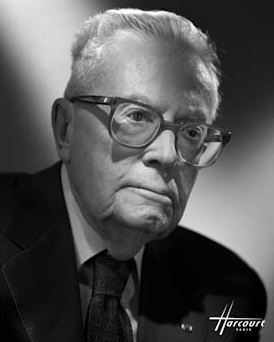
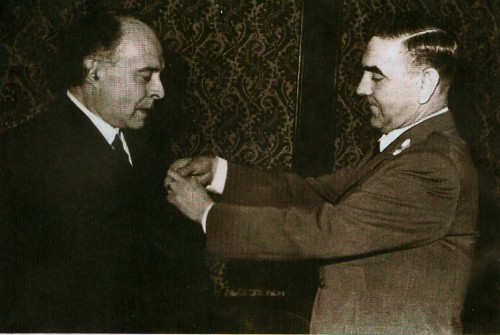

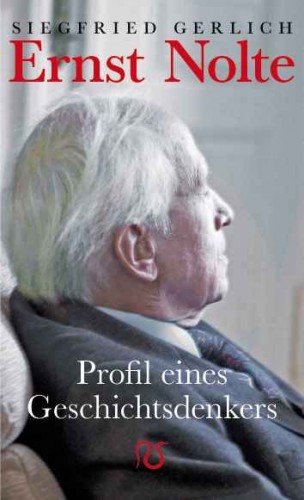 Über die
Über die 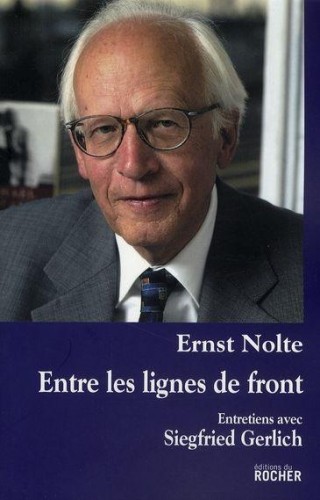 Jenseits dieser privaten Partydauerstimmung, in der man die eigene Vita der Amüsementsteigerung widmet, weiß der Deutsche von heute aber sehr genau, wo und auf welche Schlüsselworte hin er auf Moll umzuschalten hat: beim Befassen mit dem Düsterdeutschland der Jahre vor Neunzehnhundert-Sie-wissen-schon. Gerät man auf diesem kontaminierten Gelände auch nur unter Verdacht, die geschichtspolitischen Dogmen nicht hinreichend verinnerlicht zu haben oder offenbart man gar Ermüdungserscheinungen bei dem Distanzierungsvolkssport Nummer eins, dem Einprügeln auf die herrlich toten »Nazis«, darf man sich nicht wundern, wenn man eines schönen Tages als »Rechtsextremist« o.ä. aufwacht. Diesem Umstand ist es zu verdanken, daß sich zwischenzeitlich die meisten NS-Forschungsfelder in politisch-psychologische »No-go-areas« verwandelt haben, in denen nicht Erkenntnisdrang, sondern penetranter Dogmatismus den (Buß-)Gang der Dinge bestimmt.
Jenseits dieser privaten Partydauerstimmung, in der man die eigene Vita der Amüsementsteigerung widmet, weiß der Deutsche von heute aber sehr genau, wo und auf welche Schlüsselworte hin er auf Moll umzuschalten hat: beim Befassen mit dem Düsterdeutschland der Jahre vor Neunzehnhundert-Sie-wissen-schon. Gerät man auf diesem kontaminierten Gelände auch nur unter Verdacht, die geschichtspolitischen Dogmen nicht hinreichend verinnerlicht zu haben oder offenbart man gar Ermüdungserscheinungen bei dem Distanzierungsvolkssport Nummer eins, dem Einprügeln auf die herrlich toten »Nazis«, darf man sich nicht wundern, wenn man eines schönen Tages als »Rechtsextremist« o.ä. aufwacht. Diesem Umstand ist es zu verdanken, daß sich zwischenzeitlich die meisten NS-Forschungsfelder in politisch-psychologische »No-go-areas« verwandelt haben, in denen nicht Erkenntnisdrang, sondern penetranter Dogmatismus den (Buß-)Gang der Dinge bestimmt.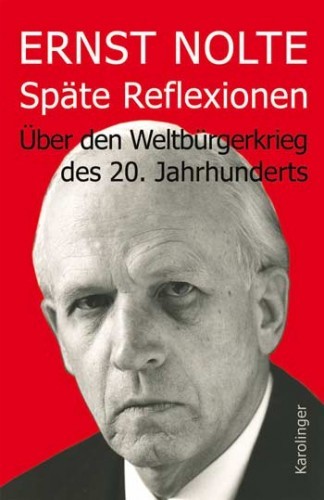 Wer als junger Deutscher zu einem solch aberwitzigen »mourir pour Auschwitz« nicht bereit ist, wird gnadenlos mit der »Hitler-Scheiße« (Martin Walser) zugedeckt und läuft Gefahr, als »Heide der Gedenkreligion des Holokaust« (Peter Furth) über Nacht seine sozialen Beziehungen zu verlieren. Denn wer ein Tabu übertreten hat, wissen wir seit Freud, wird selbst tabu. Die dazu erforderliche braune Lava wurde und wird von den Niemöllers, Eschenburgs, Wehlers, Benz’, Knopps e tutti quanti seit Jahrzehnten am Blubbern gehalten. Ein Solitär wie Nolte, der – ganz ohne den Mundgeruch der Bewältigungstechnokraten – die historischen Abläufe 1917ff. nüchtern und mit luziden Zwischentönen analysiert, könnte bei diesem Simplifizierungsgeschäft nur stören.
Wer als junger Deutscher zu einem solch aberwitzigen »mourir pour Auschwitz« nicht bereit ist, wird gnadenlos mit der »Hitler-Scheiße« (Martin Walser) zugedeckt und läuft Gefahr, als »Heide der Gedenkreligion des Holokaust« (Peter Furth) über Nacht seine sozialen Beziehungen zu verlieren. Denn wer ein Tabu übertreten hat, wissen wir seit Freud, wird selbst tabu. Die dazu erforderliche braune Lava wurde und wird von den Niemöllers, Eschenburgs, Wehlers, Benz’, Knopps e tutti quanti seit Jahrzehnten am Blubbern gehalten. Ein Solitär wie Nolte, der – ganz ohne den Mundgeruch der Bewältigungstechnokraten – die historischen Abläufe 1917ff. nüchtern und mit luziden Zwischentönen analysiert, könnte bei diesem Simplifizierungsgeschäft nur stören.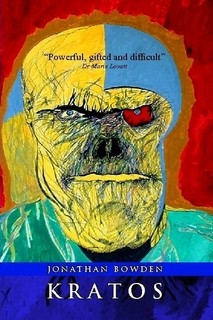


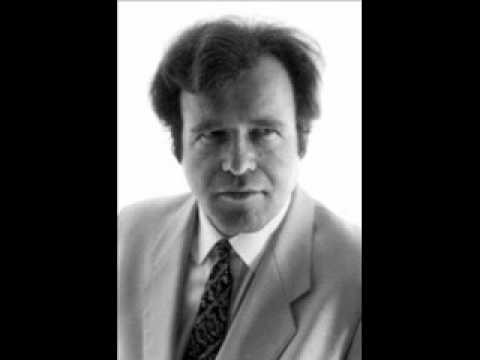


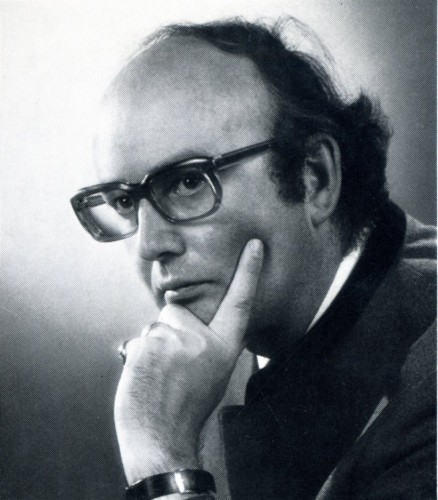
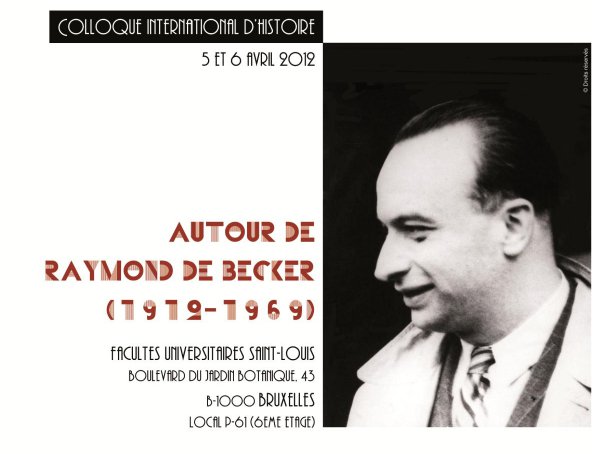

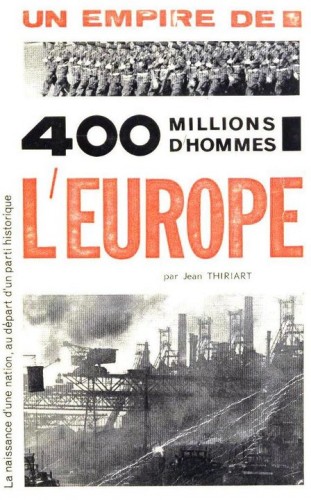
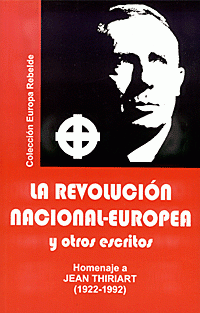 In 1981, a terrorist attack by Zionist criminals against his office in Bruxelles was the decisive input for Thiriart to restart political activity. He kept in touch again with the former dealer of La Nation Européenne, the Spanish historian Bernardo Gil Mugarza, who, during a long interview (108 questions), gave him the chance to newly and better explain his political thought. So a new book could take form: it was a book that Thiriart wanted to publish in Spanish and German languages, but it is still unpublished.
In 1981, a terrorist attack by Zionist criminals against his office in Bruxelles was the decisive input for Thiriart to restart political activity. He kept in touch again with the former dealer of La Nation Européenne, the Spanish historian Bernardo Gil Mugarza, who, during a long interview (108 questions), gave him the chance to newly and better explain his political thought. So a new book could take form: it was a book that Thiriart wanted to publish in Spanish and German languages, but it is still unpublished.

